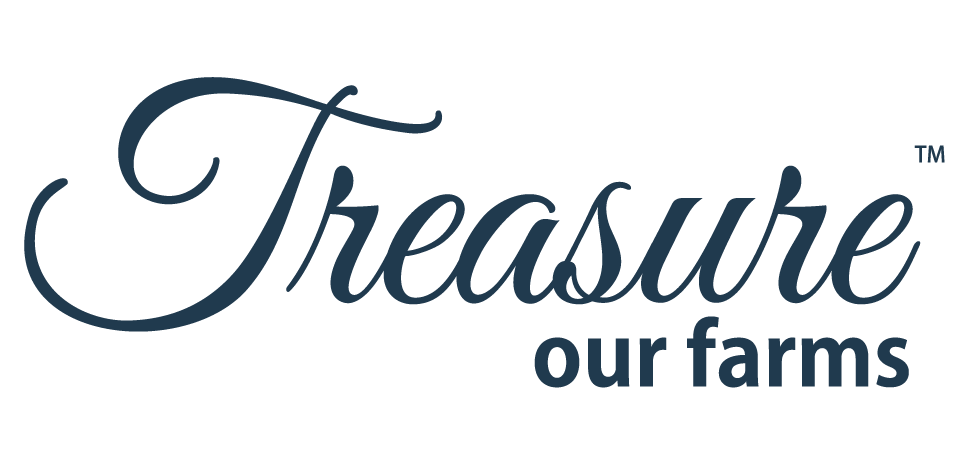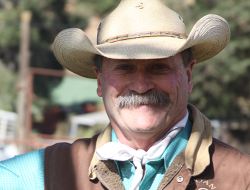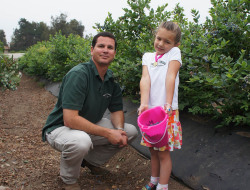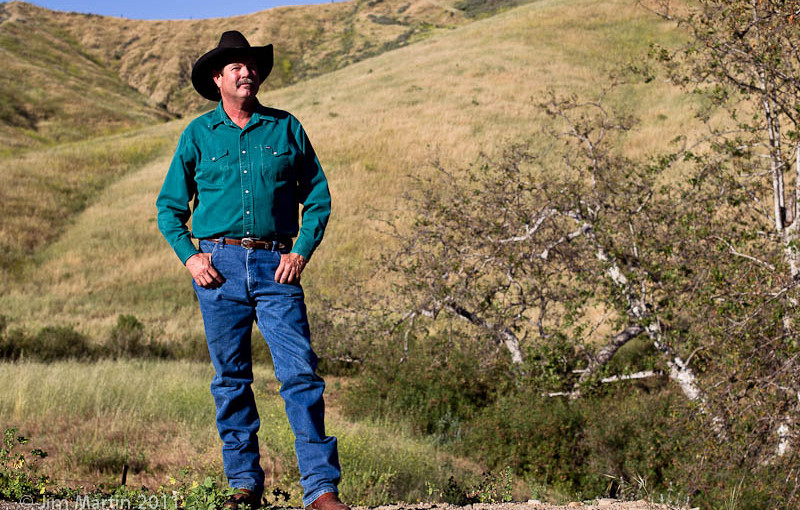Richard Atmore is a big guy with a big smile and a big handshake. Also, a big pickup truck and a big cowboy hat. He runs R.A. Cattle Co., which runs a herd of several hundred cows, calves and bulls on about 6,800 acres in the hillsides north of Ventura.
Rich’s ranch is known as a cow-calf operation — he breeds his own cows to his own bulls, and raises the resulting calves until they weigh about 500 pounds. At that point, they’re sold at auction to “stockers” — ranchers who specialize in adding another 400 or so pounds to each grass-fed steer — who in turn sell them to feedlots, where the animals typically will be fed grain until they reach market weight of around 1,200 pounds and are slaughtered.
He learned the ranching ropes, so to speak, from a couple of real old timers, Rocky Esparza and Toots Jauregui, who ranched adjoining leased parcels in the Ventura hillsides. Rich started working on Rocky’s ranch in 1979 when he was two years out of Buena High School and bought out the operation when Rocky retired about eight years later. When Toots retired — it was a long wait; he was still riding horses when he was 90 — Rich took over the lease to the adjacent property as well.
Rich Atmore, as manager and steward of Lloyd Properties has stewarded the management of all native grasses and kept invasive species out in maintaining the traditions that he was taught. A visit to the historic ranch off of Foothill in Ventura, means that you will see the rare grasses from our history and the time of the Chumash. The ranch is maintained to represent all native habitat types across their natural range of variation (species types of endemic, rare, endangered, focal, keystone, umbrella, etc.) Other efforts to maintain the pristine, yet working ranch include:
- Maintain viable populations of all native species in natural patterns of distribution and abundance
- Maintain ecological and evolutionary processes (disturbance, predation, hydrological regimes) that maintain biodiversity
- Design the system to be responsive to long-term change (climate change)
Conservation plans also include these types of actions: designation of reserves, and of corridors and linkages (for species migration); identification of restoration projects to repair damaged landscapes; and reintroduction of ecological processes (fire, etc.). Implementation of these involves acquisition, management, policies, stewardship, and other sustaining programs.
Just as the Chumash of old used fire and effective bio diversity this historic property is maintained with the goal of the ultimate of nature in protecting it. The Chumash spirits will now be free to roam again in familiar surroundings forever.



